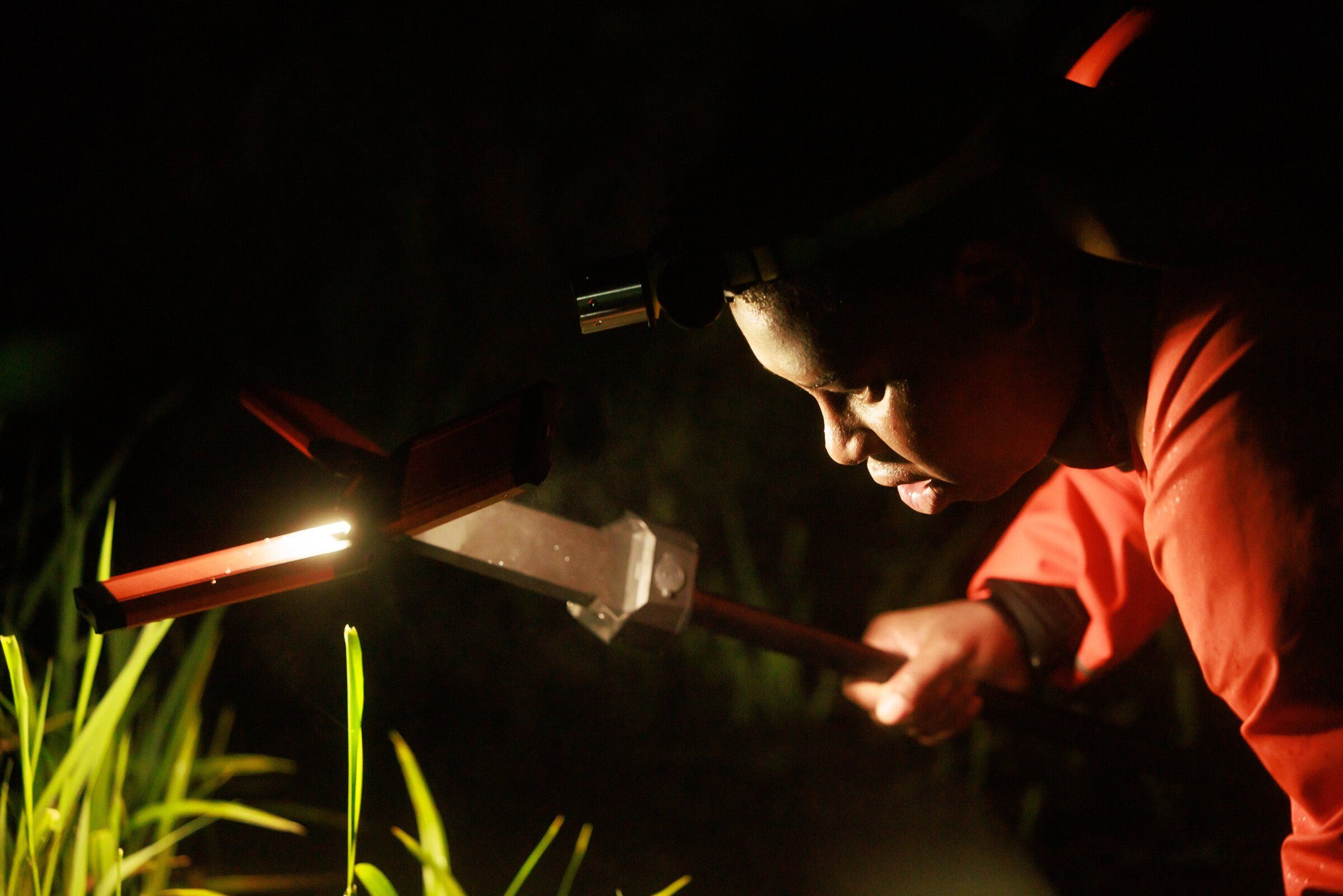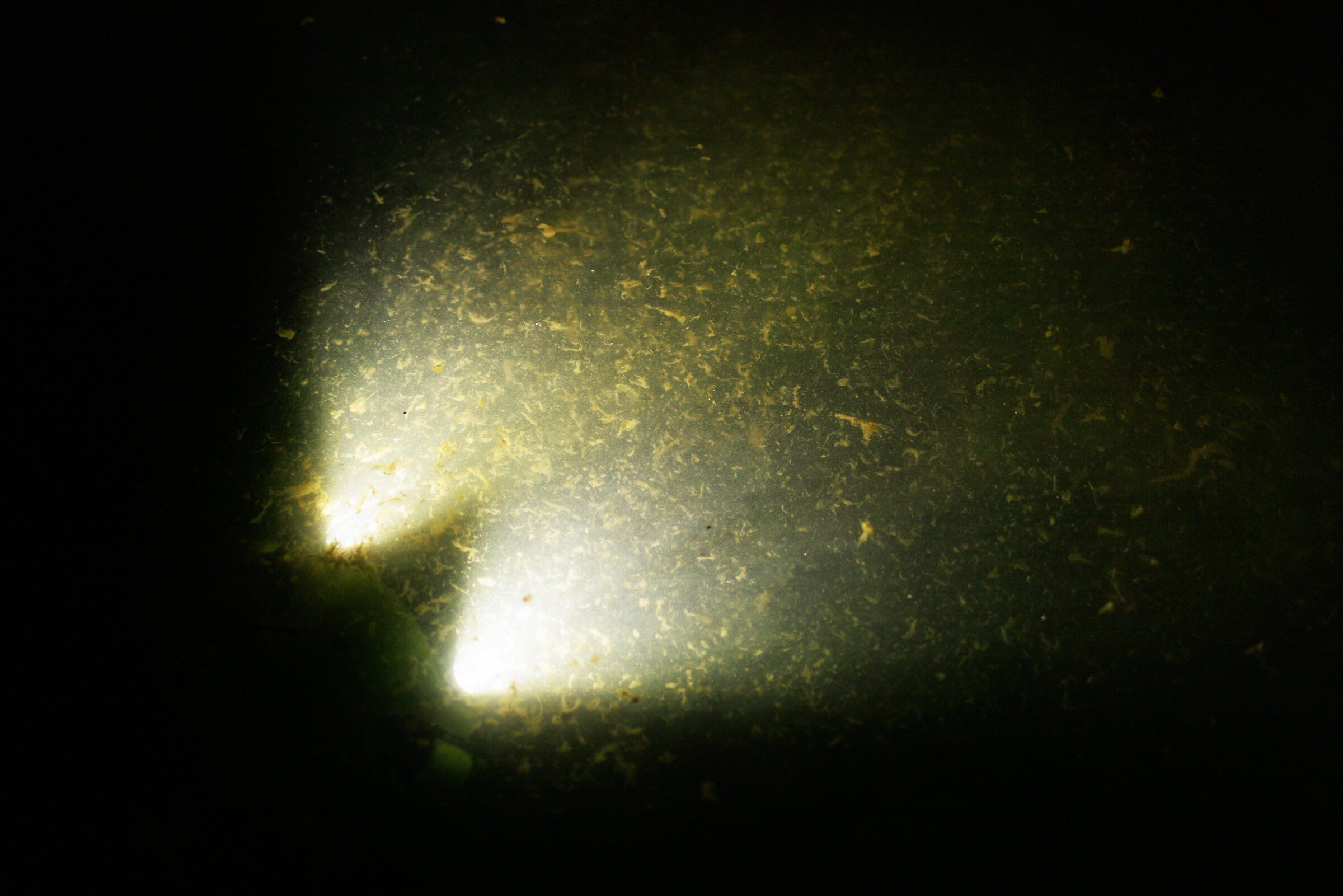Carrying a vivid orange and grey dry go well with, Ashley Townes stepped into the murky water of Lake Washington beneath a yellow moon.
It was a cool April night as Townes placed on a thermal hoodie, goggles and a snorkel and confronted the piercing white lights of Boeing’s Renton manufacturing unit throughout the water. Close by mallards rested. Townes sunk into the water with a GoPro connected to a light-weight, her dry go well with turning into an orange blob beneath the floor.
It was round bedtime for many, however for Townes, swimming at evening right here is a part of her work as a fish biologist and a member of a grassroots group of neighbors who’ve advocated and fundraised for years to revive Be’er Sheva Park.
Since 2017, $2.5 million has been devoted towards upgrading its 25½ acres — named after Be’er Sheva, Israel, certainly one of Seattle’s sister cities — and bettering entry to Lake Washington.
The grassroots group — utilizing the slogan “The place’s the seashore?” — has identified that whereas waterfront parks elsewhere within the metropolis are typically bigger, higher maintained and with facilities, Be’er Sheva Park, which serves a predominantly Black and various neighborhood, has not gotten the identical therapy.
Final yr, the Rainier Seashore neighborhood celebrated the finish of its first section of renovations, which included an upgraded waterfront, lined gathering areas, lighted strolling paths, barbecues and picnic tables, and a cultural efficiency stage (which was then broken by November’s bomb cyclone).
Townes’ work is a part of the following section of renovations, totaling round $500,000, which incorporates restoring the shoreline and salmon habitat.
That is the third yr that Townes, a College of Washington doctorate scholar, has visited the seashore at the very least twice a month between January and early June, throughout Chinook migration season, to depend what number of child salmon are utilizing the shoreline habitat and the 400-feet stretch of Mapes Creek. The park has been a recognized resting spot for the Cedar River salmon, the place they eat bugs within the 5-foot-deep water and conceal from predators, Townes stated.
The fish are most lively, and visual, at evening. This has led to Townes being known as “the fish woman” or “MacDiver” by the neighbors who hand around in the parking zone close by listening to music at evening. Fortunately, Townes lives a brief distance away.
Her analysis is meant to doc whether or not juvenile Chinook salmon are utilizing the habitat, which was solely restored final yr earlier than this yr’s migratory season.
In November, a barge traveled to the South Seattle park and lowered six 40-foot logs into the water, which have been anchored to the lake backside. Employees additionally added gravel that’s higher for child salmon to keep away from predators and put in an underwater “plant mound” that can be used to attempt to reestablish a local plant.
Whereas among the salmon counting is completed manually within the water with a GoPro, Townes additionally makes use of a lime inexperienced remote-controlled submersible with an extended tether connected to a online game joystick. In 2021 and 2022, Townes had surveyed the location earlier than the realm was restored.
In April, Townes counted seven juvenile Chinook and a few bottom-dwelling sculpin hanging across the logs, after which 16 juvenile Chinook in Mapes Creek, every grey fish only some centimeters lengthy with black parr marks down its aspect.
Townes says she has seen extra salmon in each the restored habitat and the creek for the reason that habitat was restored. Her monitoring work can be accomplished after a second yr of post-construction monitoring in 2026.
“The Duwamish Tribe lived right here (tons of) of years in the past and we are able to’t return to that lovely pure state that it was again then, however we are able to get near a number of hundred years in the past,” she stated.
The park has different enhancements deliberate, like putting in health gear and upgrading the play space. As for the salmon habitat, this fall, Townes and different ecologists will attempt once more to determine the duck potato, a marshy tuber that has traditionally grown within the space, on a mound of grime constructed within the water.
“Final yr they planted the duck potato, and we had safety fencing excessive of it, however the Canada geese ripped by way of the safety fencing and ate each single duck potato,” stated Jim Keller, a managing principal with panorama structure agency SiteWorkshop.
The duck potato and bulrush are native to Western Washington lakes, although its presence largely disappeared as Lake’s Washington’s marshy edges gave method to bulkheads and after the extent of the lake was dropped by the Ballard Locks, stated Lizzie Zemke, a restoration ecologist who labored on the Be’er Sheva challenge earlier than retiring not too long ago. The plant can also be culturally important to tribes as a meals supply, she stated.
The difficulty with making an attempt to reintroduce a marsh plant in Lake Washington is that the water stage of the lake is reverse to what the plant expects throughout its rising cycles, Zemke stated. In the course of the winter, the water stage within the lake is saved artificially low after which artificially excessive through the summer season, she stated.
The potential resolution that environmental engineers got here up with was to put in a “plant mound” within the water, which Zemke hopes will enable the crops to get a head begin on the rising season.















